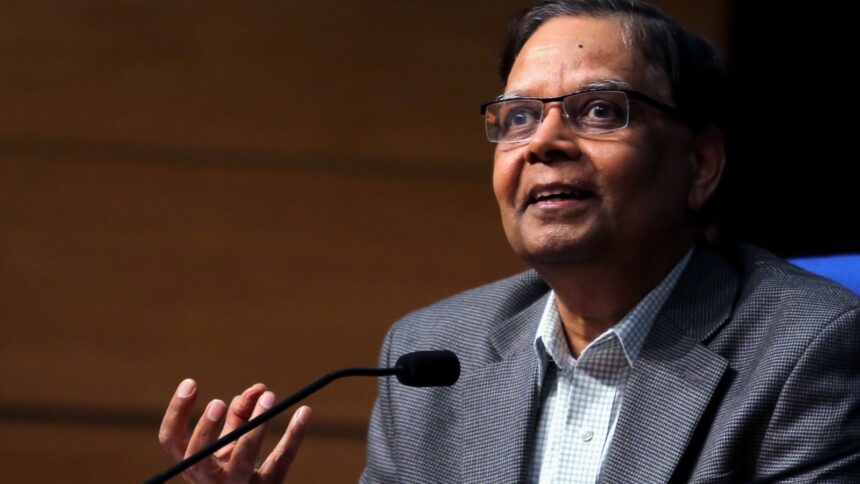Import restrictions in the US—whether through tariffs or rules of origin—will ultimately be higher for China, Vietnam, and Cambodia than for India, according to the 16th Finance Commission chairperson Arvind Panagariya.
Speaking at an event hosted by the Isaac Centre for Public Policy, Panagariya said the US-China trade conflict is “here to stay” and that a successful trade deal with the US could pave the way for agreements with the EU and the UK. On the Viksit Bharat aspiration, Panagariya said India could achieve a per capita income of $14,000 by 2047 “in spite of all the gloom”.
“There are some challenges looming from the trade side. At the moment, my own assessment is that we will come out of it stronger rather than weaker,” he said. According to Panagariya, the US wants to decouple from China on the grounds that it has “operated rather unfairly”.
He noted there is a strong perception within the US administration that Chinese goods continue to enter the country through transshipments via Vietnam, Cambodia, and other neighbouring countries.
“My own prediction is that after the dust settles, restrictions on imports into the United States, not just from China, but also from Vietnam and Cambodia — either through tariffs or rules of origin— will remain significantly higher than on (imports from) India,” Panagariya said.
According to him, a trade agreement with the US will also “open the door wider” for agreements with the EU and the UK, which will place India “incredibly favourably” in global trade.
In his address, Panagariya emphasised that India has grown steadily despite three big shocks — the global financial crisis, the Covid pandemic, and the NBFC crisis. “Between 2003-04 and 2019-20, excluding the Covid years, which is a 17-year period, we experienced an average growth rate of 9 per cent in real dollars. Even when including the Covid years and extending to 2023-24, over a 21-year period, we grew at 7.8 per cent.”
“Between 2003–04 and 2019–20, excluding the Covid years, which is a 17-year period, we experienced an average growth rate of 9 per cent in real dollars. Even when including the Covid years and extending to 2023–24, over a 21-year period, we grew at 7.8 per cent. I feel reasonably confident that we can maintain a steady rate of growth at the current high levels,” he said.
To reach the Viksit Bharat target of $14,000 per capita, Panagariya said our overall gross national income (GNI) must grow by 7.8 per cent each year.
According to the World Bank’s definition of a developed country, per capita income must be at least $14,000 (in nominal terms). In FY24, India’s per capita income stood at $2,570, which is calculated as the ratio of GNI to the population in any given year.







